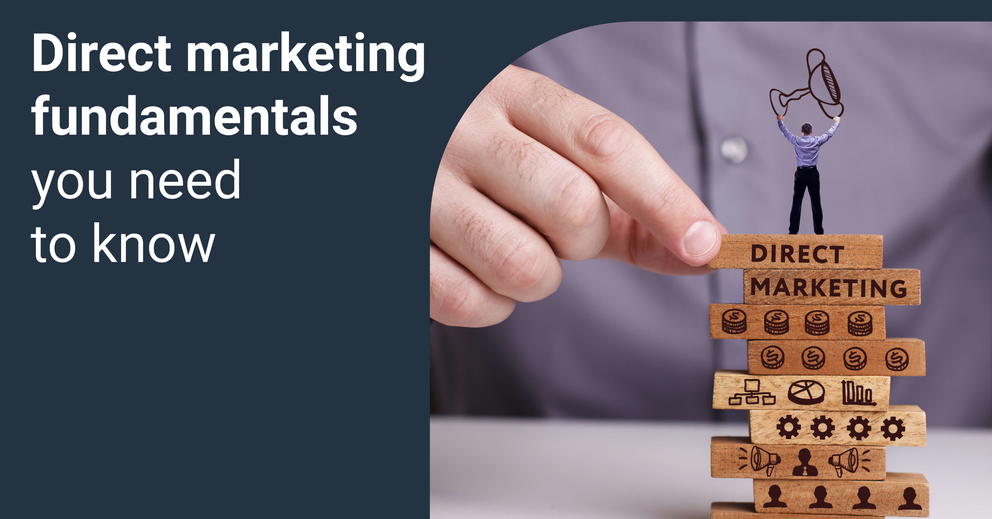The Definitive Guide To Direct Marketing Channel
Marketing is one of the most important aspects of a successful business. Marketers must be aware of the changing consumer behavior and new trends that are emerging. For a long time, brands have used traditional direct marketing channels to grow their customer base and re-engage with the old ones.

Aug 04 2021●8 min read

However, times have changed, and advances in technology have shifted marketers’ focus from traditional marketing channels to the digital landscape. Nowadays, brands can reach consumers through social media, search engine consoles and digital press.
This guide explains different types of direct marketing and provides information on making the most of your direct marketing campaign.
What is direct marketing?
Direct marketing is a marketing campaign whose key feature is to initiate a sort of personal connection between the customer and the business. The brand communicates directly with a targeted customer or a segment of customers through one or more marketing channels. A goal of a direct marketing campaign is an immediate response — customer engagement with the ad or purchase.
Direct marketing contrasts with traditional advertising methods that promote campaigns through old-fashioned advertising platforms, such as billboards, print media, radio and television broadcasts. The brand strongly relies on third parties to spread its promotional message to large audiences, hoping that some consumers who are exposed to the ad will seek more information about the business and its products. Direct marketing typically happens between the marketing organization and the customer, with no mass messaging and without the help of third parties.
The difference between direct and indirect channels
One of the main differences between direct and indirect marketing is the marketing channels used to connect with customers. There are two types of marketing channels: promotional and distributional channels.
Promotional channels include all ways that the business can communicate with potential customers. Distribution channels describe the methods that the brand uses to deliver the products or services to the customer.
When talking about direct and indirect marketing, it is important to understand both the promotion and distribution of the company’s products and services. Bear in mind — both of the channels are managed in totally different ways.
While promoting a product, direct marketing happens when the business seeks out promotional channels that directly communicate with the potential customer. This could include e-mail marketing, direct mail, SMS marketing, online selling and other digital media that support personalized messaging.
In the product or service distribution stage, marketing is used for selling the product directly from the manufacturing company to the customer without the involvement of third parties, such as agents, warehouses, distribution companies, wholesalers and retailers.
However, promotional and distribution marketing goes hand-in-hand. If the business produces the products and signs a distribution contract with a retail store, the product can be promoted directly in the store and through its platform. The brand will benefit from the shop’s shelf space, promotional material, television and radio commercials and other forms of indirect marketing.
If the business is a B2B software company developing SaaS products, the distribution of the product will rely heavily on the business’s marketing efforts. There is no need for third-party channels to be involved, as the company is promoting and selling the product directly to the consumer.
What are the channels used for direct selling?
The business must have the infrastructure, data and processes in sync to reach the highest ROI (return on investment) from the direct marketing campaign.
Marketing channel selection is the first task associated with direct marketing. Marketers must identify the best performing marketing channels to reach potential customers directly with the marketing campaigns. The most popular direct channels are:
- Telemarketing is one of the earliest direct selling techniques. The sales representatives contact potential clients by phone and present the business’s products and services. However, some regions have a do-not-call list that allows individuals to opt out of advertorial calls. Countries in the EU have developed a strict policy that does not allow the distribution of individuals contacts without their consent. However, businesses can still approach potential clients by phone who have opted-in for marketing purposes or have an existing relationship.
- Marketing press distribution is also a channel that developed in early direct marketing days. Businesses distribute catalogs, brochures or other press marketing products through the mail for potential customers living far from a physical store. Creating high-quality and professional brochures or catalogs that showcase your products/services can be easily done with the help of a brochure maker. This way, marketers motivate customers to shop online or send in-mail or call-in requests. The marketing press distribution channel eliminates the need for consumers living in rural areas to travel long distances to the physical business’s locations.
- Mobile marketing includes SMS advertising, push notifications, mobile banner ads and other direct mobile channels between the business and potential customers. Same as telemarketing, companies must be aware of the do-not-call lists and certain regions’ marketing restrictions.
- Email marketing is one of the most popular digital direct marketing channels to date. Email distribution is cost-efficient, from creating the campaign to design and testing. It allows businesses to communicate directly with existing customers and potential customers who have opted-in to receive companies’ newsletters or updates.
- PPC (pay-per-click) advertising on platforms like Google, LinkedIn and Facebook allows businesses to reach the target audience with a specific marketing message and goal. PPC marketing is a great tool for businesses to generate more traffic to the website, raise engagement and increase sales, as the campaigns are exposed to potential customers.
- Social media is one of the emerging direct marketing channels. Social media platforms like Facebook, Instagram or Twitter are perfect for direct advertising, as they promote direct response between the customer and the business while boosting engagement and brand awareness. Businesses often use Social Media marketing services together with social listening tools to stand in front of the competition and bring their products or services closer to the target audience.
How data can help drive better ROI from direct marketing
A recent study conducted by McKinsey & Company has shown how customers’ habits have changed, especially after the global pandemic. Marketers must develop targeted, proactive marketing campaigns to reach existing and potential customers, rather than relying on passive promotional efforts. Here are some key takeaways from the study on changing consumer behavior and tips on how the marketer can increase customer engagement and loyalty:
Customers have become less loyal to one brand, partly due to product shortages early in the pandemic that forced consumers to purchase products from new or unfamiliar brands. To overcome this obstacle, marketers must deliver consistent, individualized communications that reinforce the personal connection between the brand and the customer.
Consumers remain mindful of discretionary spending. In other words — marketers still need to persuade the potential customer. With even more focus on price, marketers must be aware of the price changes and customize prices to stay in line with the competitors.
The shift to online shopping emerged through the pandemic. The eCommerce rocketed from $799 billion in 2020 to $909 billion in 2021 and it’s only expected to grow. The growing expectation of personalized experiences across all channels forces marketers to create exceptional personalized marketing campaigns to win over the customers. Rather than focusing on one attribution measurement, marketers must understand the pattern of touchpoints that guide customers through their whole purchasing journey.
To make easier data-driven insights on the existing marketing campaigns, most marketers use reporting tools. This way, advertisers can cut time on labor-intensive, routine tasks such as campaigns’ data collection, cleaning and visualization. The reporting tool takes care of all of the data operations and presents the easy-to-digest report within minutes.
The changing customers’ behavior puts a spotlight on the importance of data. Data allows marketers to understand how customers engage with the brand’s marketing campaigns and search for new abilities to generate a direct response. Modern customers understand the power of data and expect businesses to understand their needs.
While today’s marketers can leverage data to reach customers in new and engaging ways, companies must handle the customers’ data as the priority. Data safeguard is not just good for the business’s customer service - it’s the law. Marketers must develop and practice data policies that comply with companies’ and consumers’ local, state, and national regulations.
Bottom line
Direct marketing is a powerful tool for businesses to sell or distribute their products online. By directly communicating with potential customers through best-performing digital channels, companies can take full control of the customer experience and purchase journey.
It is also important to analyze the data collected from direct marketing campaigns. The data-backed insights will allow the business to improve customer loyalty, optimize marketing budget and generate a bigger return on investment.

WRITTEN BY
Benediktas KazlauskasBenediktas is a detail-oriented writer with a passion for marketing and technology. Using his vast experience in Business Management and Sales, he approaches every blog with the same idea: How to make readers come back for more?